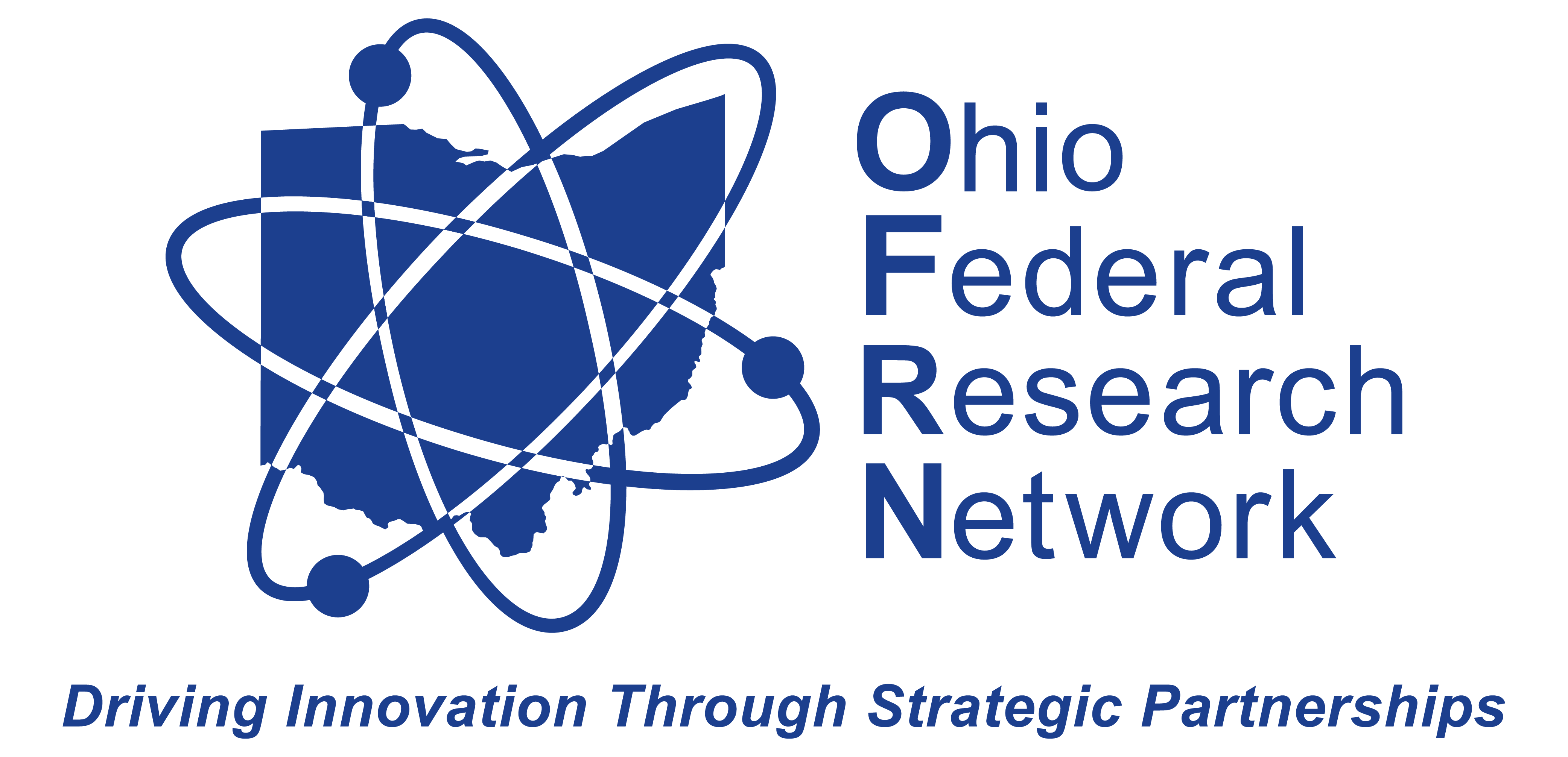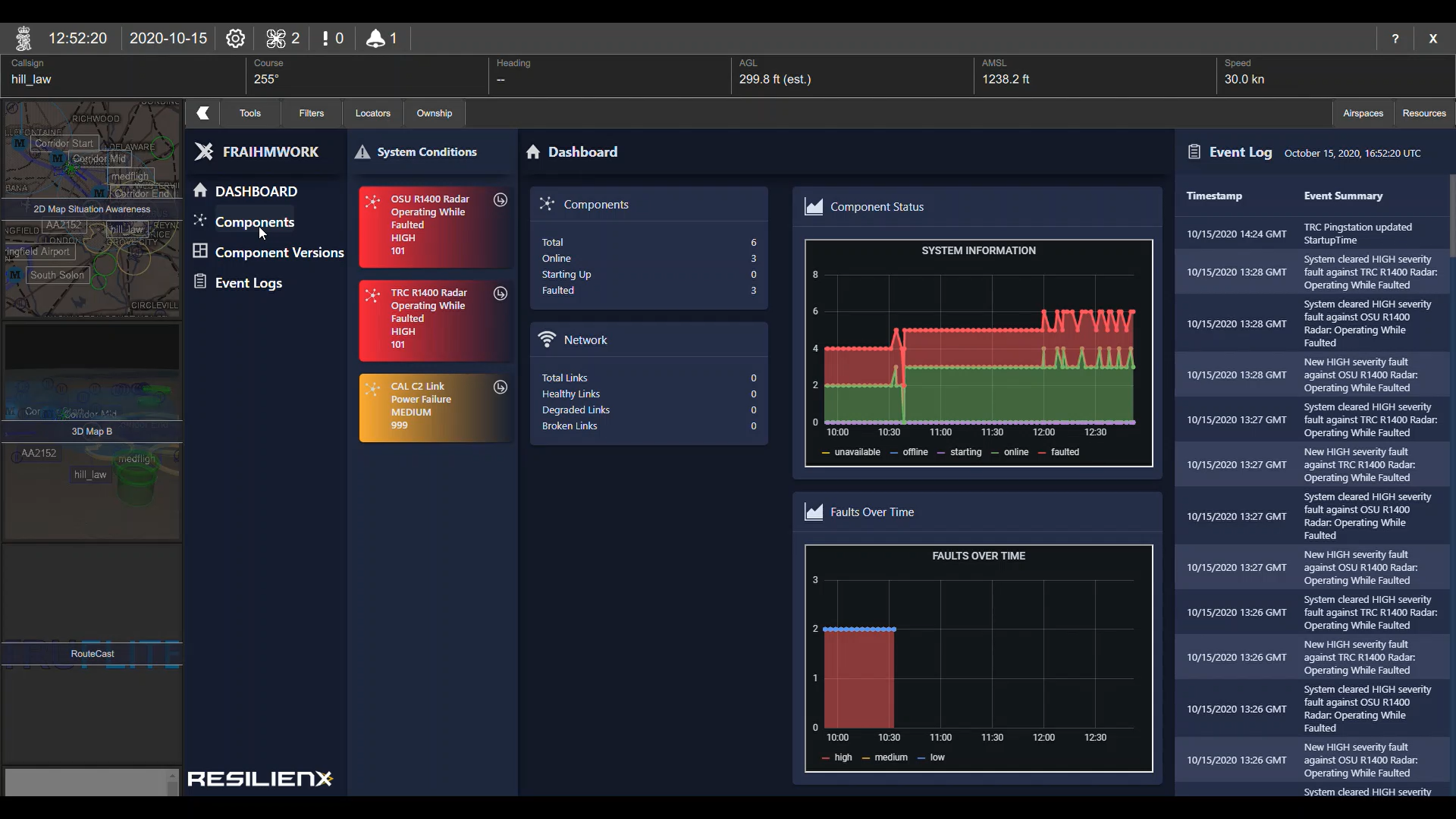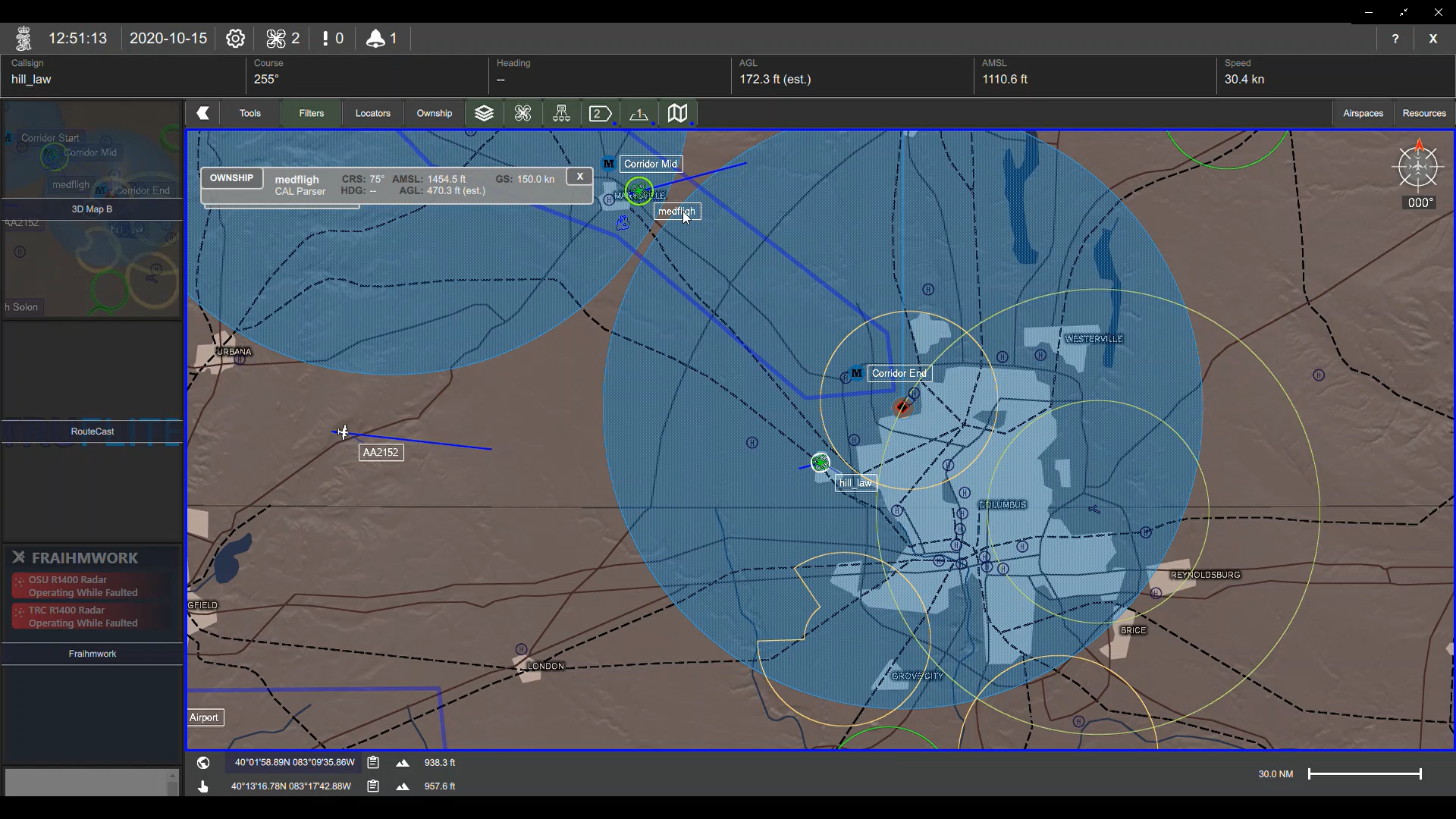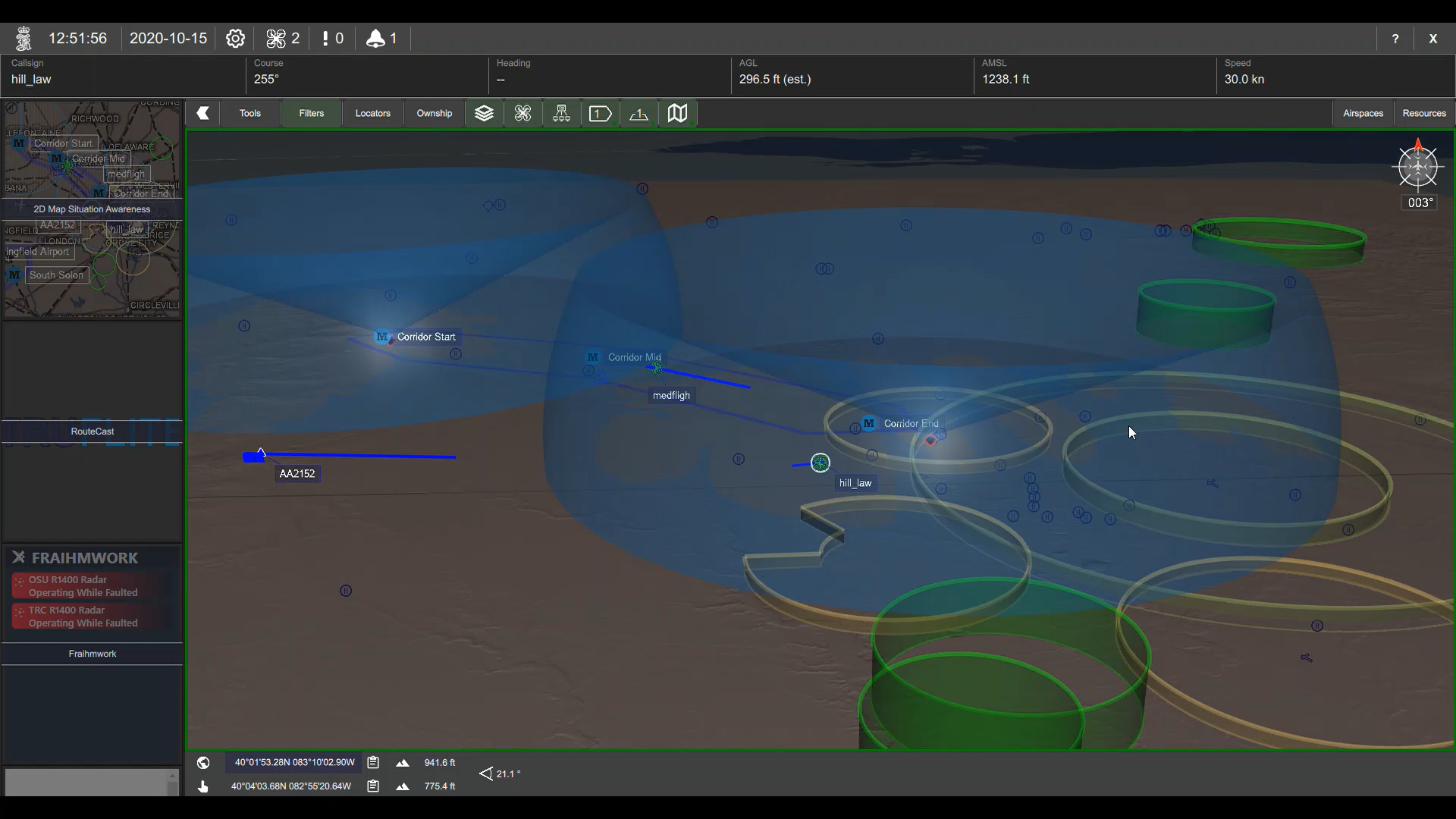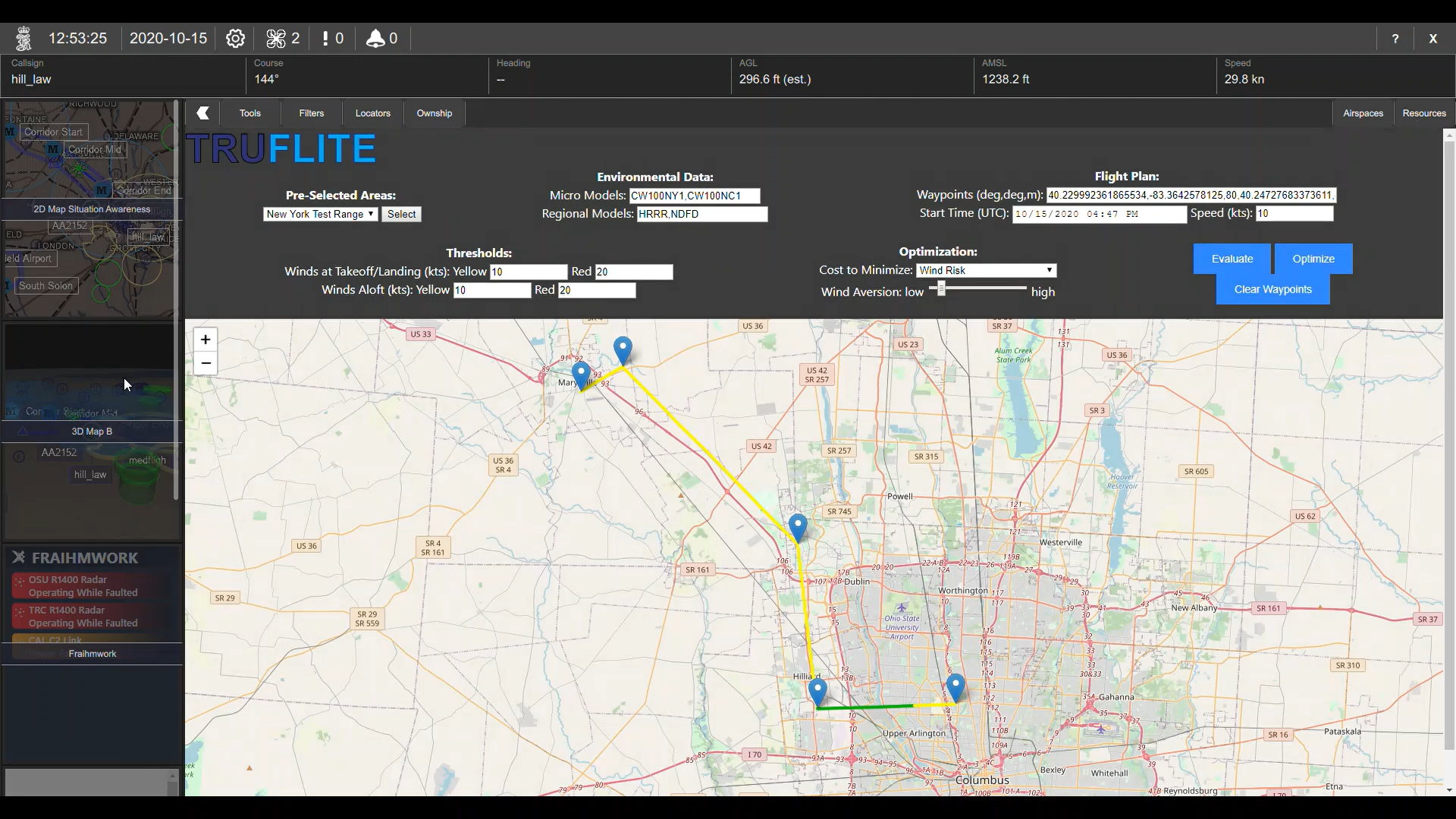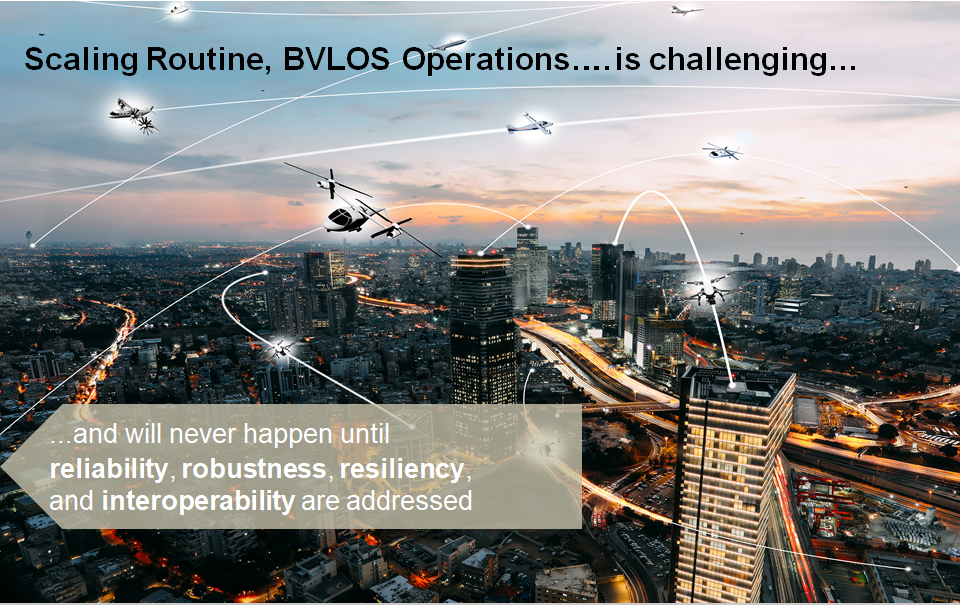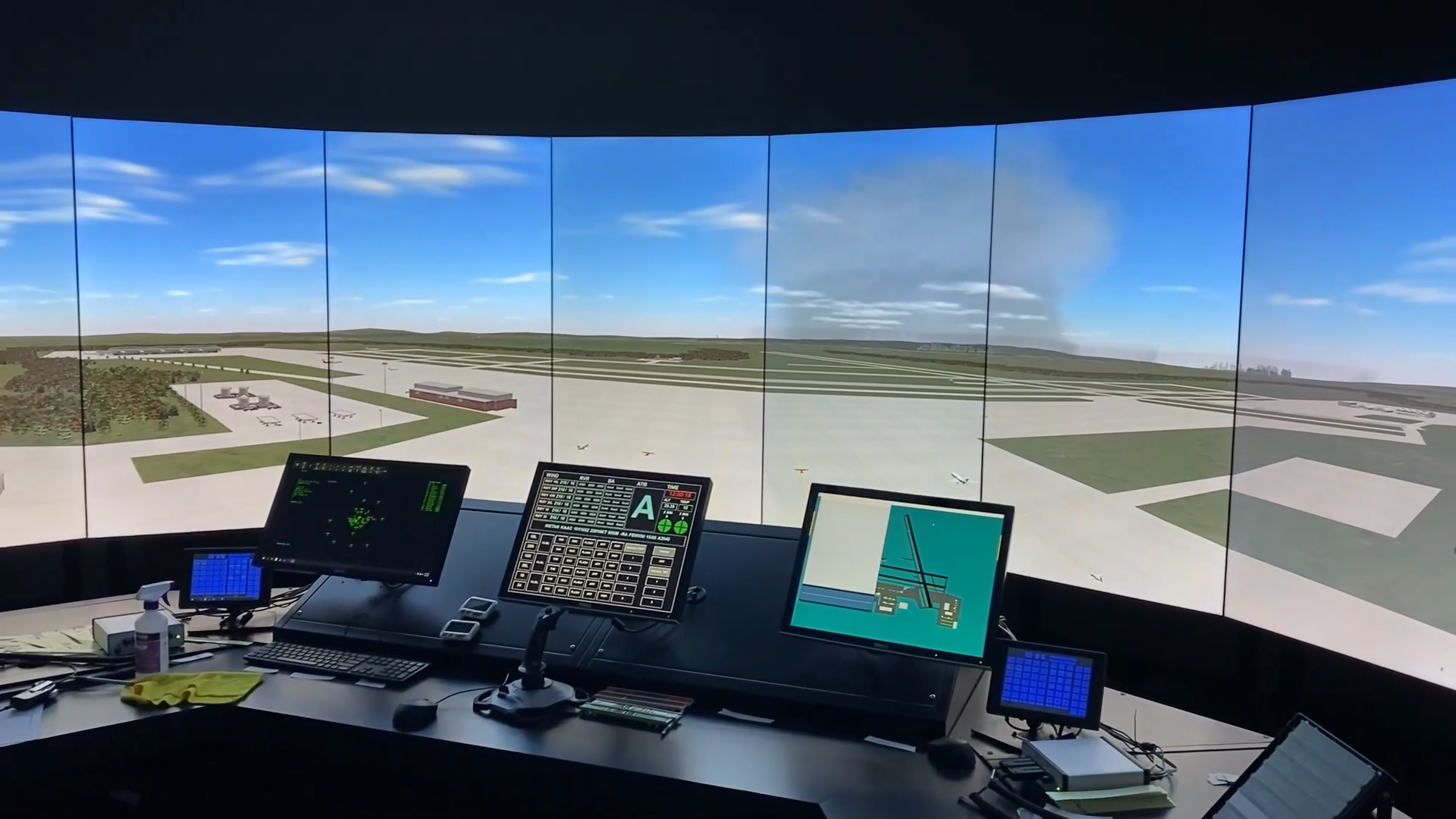Innovation
This effort is directly aligned with one of the National Aeronautics and Space Administration’s (NASA) six focus areas: In-time System-wide Safety Assurance (ISSA). ISSA is discussed in detail in ‘In-Time Aviation Safety Management: Challenges and Research for an Evolving Aviation System (2018)' and would "...provide a continuum of information, analysis, and assessment that supports awareness and action to mitigate risks to safety..." This technology establishes what is essentially an ISSA system for Ohio UAS operations and directly supports NASA’s research plans to develop an ISSA system for the National Airspace System.
Objective
Our team is working across the world to safely and efficiently integrate Unmanned Aircraft Systems (UAS) into the airspace, at scale, to allow routine complex operations (Beyond Visual Line of Sight (BVLOS), over people, etc.). In this work, we’ve learned that many challenges exist and that there are gaps in current capabilities. The objective of this effort is to de-risk some of these challenges and fill one of these gaps for Ohio. To de-risk future UAS related work and investments, we will performa UAS Interoperability Study to address how the various UAS operations (e.g. low-altitude sUAS, UAM, PAV, etc.) will interoperate within the new UAS Traffic Management (UTM) framework and how these systems will interoperate with existing air traffic management (ATM) system for manned aircraft. Understanding these interactions is critical for enabling routine UAS operations, both in Ohio and throughout the industry. A gap that our team has identified through previous efforts is the need for health and integrity monitoring of the UAS UTM and Ground Based Detect and Avoid (GBDAA) ecosystems. We couple this with adverse condition detection and enhanced Situational Awareness (SA) necessary to establish a robust, integrated Contingency Management Platform (CMP). This platform creates a sustainable, scalable ability to mitigate risks across these ecosystems. It is responsible for detecting faults, failures or adverse conditions affecting the data, services, or components that UAS operations rely on for safety of complex operations. This platform is instrumental to UAS Test Sites, Air Navigation Service Providers (ANSPs), and State UAS programs such as those funded by the Ohio Departments of Transportation (ODOT). We integrate the CMP to improve the safety and situational awareness for the SkyVision GBDAA system as well as the ODOT UTM Corridor. This improves the safety case for both systems while providing a testbed for future UAS operation contingency management and risk mitigation research.
Background
Our team is comprised of experts in their respective fields bringing best-of-breed products, technologies, and services to develop a robust UAS Operations CMP. This team is led by CAL Analytics, with expertise in systems engineering and modeling and simulation. Kongsberg Geospatial brings their industry renowned SA display, IRIS UASTM. TruWeather Solutions (TWS) offers over 35 years of aviation weather experience and their low-altitude, micro weather, weather hazard detection and forecasting software and live forecaster decision support service; TruFlite UASTM. Kent State University brings Air Traffic Control (ATC) experience as well as an M&S environment for simulating ATC interaction and response to UAS operations. The Ohio State University has pioneered the field of Resilience Engineering and will lend this expertise to the development of CONOPS and requirements for this effort. Finally, ResilienX is providing their FRAIHMWORK™ software suite, responsible for health and integrity monitoring and logic necessary for graceful degradation of system of systems.
Commercial Goals
The Kongsberg SA display is the face of our solution, acting as the primary user interface for communicating contingency related information to system users as determined by the integrated ResilienX and TWS services. We anticipate this display to be a focal point within UTM Corridors and GBDAA operations and control centers where it will provide comprehensive monitoring and alerting of ecosystem health across a service region. This display will be of immense operational value to UAS pilots, system operators, and maintainers of both the Ohio SkyVision and Ohio UTM Corridor systems. UTM, UAM, GBDAA and ATM ecosystems operating within the U.S. must be trusted by the operators, regulators and general public to achieve success and scalability. They must be interoperable and allow flights to transition seamlessly between systems when needed, and alert each other when the actions of one ecosystem may affect another. If glitches, faults, off-nominal,or adverse conditions routinely cause the system to be down and operations to be grounded, it will erode system trust. If these systems cannot be trusted to provide robust, reliable service to the stakeholder community, they likely will not succeed, and investments into all facets of the system will be for naught. We believe our UAS Interoperability Study and CMP solution to be essential stepping stones to improving safety within the airspace for UAS operations and hope to garner feedback and acceptance from the stakeholder community as part of this effort.

